
As an impressionable neophyte weaned on the flowery yet oddly explicit ramblings of one Robert M. Parker the words always leaped out at me: acacia blossoms, candied oranges, botrytis, lychee, rosewater, verbena, quinine, bergamot, herbal tea, metallic shavings, cardamom, Louisiana steamed crawdads (I’m not kidding, it was a1999 Zind Humbrecht Clos Windsbul Gewurztraminer), spicy rosewater, smoky fennel, jellied apricot, almond cookie dough, creamed raspberries and gravel, yes, gravel!
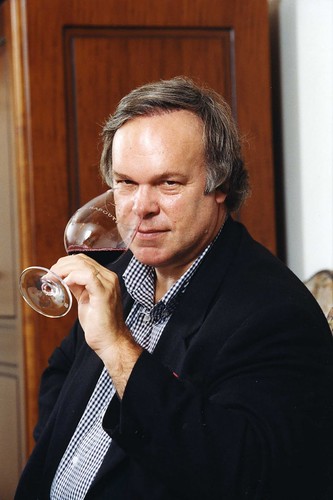 As the world’s most influential wine critic, Parker had (has?) his way with words, those often seemingly bizarre descriptors that were exhaustively printed in his newsletter, The Wine Advocate, six times a year and collected and reprinted in his frequently updated Parker’s Wine Buyer’s Guide (the sixth edition alone fills up 1,635 pages of tiny-print reviews). I collected the newsletters, packed them neatly into three-ringed binders and spent great chunks of my young adult years chasing down his most prized wines either at Vintages stores in Ontario or during quick wine runs to Quebec’s SAQ stores in Montreal.
As the world’s most influential wine critic, Parker had (has?) his way with words, those often seemingly bizarre descriptors that were exhaustively printed in his newsletter, The Wine Advocate, six times a year and collected and reprinted in his frequently updated Parker’s Wine Buyer’s Guide (the sixth edition alone fills up 1,635 pages of tiny-print reviews). I collected the newsletters, packed them neatly into three-ringed binders and spent great chunks of my young adult years chasing down his most prized wines either at Vintages stores in Ontario or during quick wine runs to Quebec’s SAQ stores in Montreal.
At first, those crazy olfactory descriptors meant nothing to me. Quinine? Lychee? Verbena? Are you kidding me? Cirtus and raspberries I understood, but bergamot? And steamed crawdads? I didn’t even want to go there.
But I made it my business to smell what he smelled in the wines he gushed over and the perfect place to begin was in the Bizarro world of the highly aromatic Gewurztraminer. Robert Parker had a deep love for this grape, especially when made in what seemed like to me the enigmatic region of Alsace in northeast France where all the wines were sold in tall Riesling-style bottles that few in the 80s or 90s would touch with a 10-foot pole.
My routine was simple, if not time-consuming; get my Wine Advocate, read the reviews and hunt down the wine. In Ontario that often meant a year or two later before the wines would even appear on LCBO store shelves (some things never change). Once located I would deconstruct the wine from an aromatic point of view, write down my observations and compare later to the Parker review. I was so far off the mark that I knew had to educate myself with some practical experience.
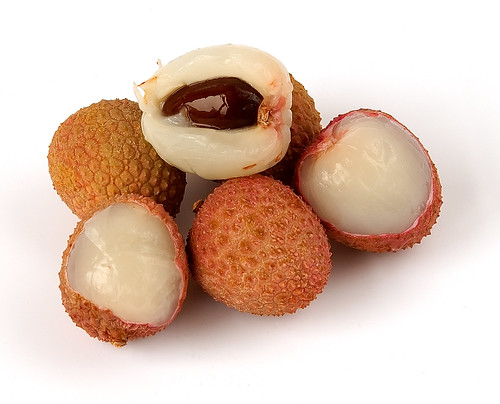 So, I bought lychees, I crushed rose petals, I squeezed grapefruit and brewed myriad aromatic teas that I had no idea existed (and I do not like tea). I raided the spice rack and nosed through the bay leaves, cloves, nutmeg and anything else Parker identified on a regular basis. And, when that wasn’t enough, I hunted down, or tried to hunt down, fennel pollen, truffle salt, urfa biber and sumac (and the like) just in case it wound up in someone’s weird wine review.
So, I bought lychees, I crushed rose petals, I squeezed grapefruit and brewed myriad aromatic teas that I had no idea existed (and I do not like tea). I raided the spice rack and nosed through the bay leaves, cloves, nutmeg and anything else Parker identified on a regular basis. And, when that wasn’t enough, I hunted down, or tried to hunt down, fennel pollen, truffle salt, urfa biber and sumac (and the like) just in case it wound up in someone’s weird wine review.
I forced myself to be an aromatic white wine sniffer man and I prided myself on the fact that I could comfortably pick out the nuances in most of the Gewurztraminers I dragged home from the LCBO.
Once you nail down the complex world of Gewurz, the rest comes easy.
Pinot Gris, Riesling, Viognier, Chardonnay Musque, Muscat and, of course, Gewurztraminer are my go-to aromatic whites, the perfect year-round sippers that appeal to the broadest cross section of wine lovers.
Aromatic whites offer up the promise of excitement on the nose and more often than not deliver exactly what you smell on the palate. These pure fruit bombs are at their best, generally speaking, when made without oak influence, stirring of the lees, malolactic fermentation or any other trickery in the winery. The majority of aromatic whites are pure, fruit-driven and refreshing.
And cool-climate wine making regions such as Canada, from coast to coast, just happen to be the perfect breeding ground for these nifty and fragrant white wines.
•••
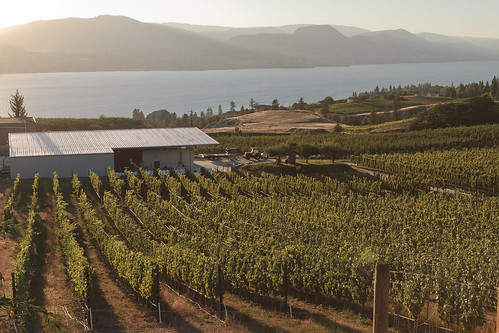
Sitting under an apple tree in what was once an orchard on the high end of the severely sloped Naramata Bench in the Okanagan Valley, JoieFarm’s Heidi Noble speaks with passion and downright conviction about her aromatic portfolio of white wines.
Noble and her husband Michael Dinn, both professionally trained sommeliers, bought their five-acre Naramata property in 2002 and, in 2007, set about replanting the apple and pear orchards to the varieties they felt would grow best in Naramata (Gewurztraminer and Yellow Muscat).
The couple both spent time in Vancouver working for wine importation firms (Heidi is also a trained chef) and were well-versed in what Vancouver restaurants wanted on their wine lists to pair with the prevailing West Coast cuisine, which included a boatload of seafood. Aromatic whites fit the bill perfectly and they endeavoured to build a portfolio that focused on filling what they determined was a hole in the marketplace.
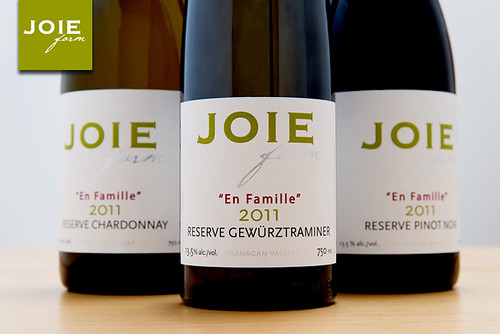 The couple works with 12 other grower families who farm 40 acres on their behalf to round out their interesting production including the proprietary white aromatic wine called A Noble Blend, which consists of Gewurz, Riesling, Pinot Blanc, Pinot Auxerrois, Schoenberger and Muscat, as well as single variety bottlings of Riesling, Unoaked Chardonnay, Pinot Blanc, Muscat, and two Gewurztraminers on the aromatic white side. (The winery also has an interesting, lighter style, red portfolio).
The couple works with 12 other grower families who farm 40 acres on their behalf to round out their interesting production including the proprietary white aromatic wine called A Noble Blend, which consists of Gewurz, Riesling, Pinot Blanc, Pinot Auxerrois, Schoenberger and Muscat, as well as single variety bottlings of Riesling, Unoaked Chardonnay, Pinot Blanc, Muscat, and two Gewurztraminers on the aromatic white side. (The winery also has an interesting, lighter style, red portfolio).

JoieFarm is the epitome of aromatic white wines, a leader in the Okanagan and one of the best in Canada in achieving personable wines that stand head and shoulders above many of its peers.
“We make what we like to drink,” says Noble, and that means a style that mirrors, with an Okanagan twist, the great aromatic white wines of Alsace, Burgundy and Germany.
Noble is adamant that the wines are made in the vineyard with the goal of always trying to find that delicate balance between natural acidity and residual sugars as well as moderate alcohol levels.
“Everyone likes juicy fruit,” she says, “but you need acidity.”
Noble, who is in charge of the winemaking team at JoieFarm, takes deliberate steps in the vineyard to make sure her wines arrive at the crush pad in pristine condition. The work is done in the vineyard to ensure fresh acidity is achieved (timing of the canopy — knowing when to the let the sun get at the grapes — and harvesting based on a balanced approach to ripeness and pH levels are crucial).
“It’s all about timing in the vineyard and making the right decisions,” says Noble.
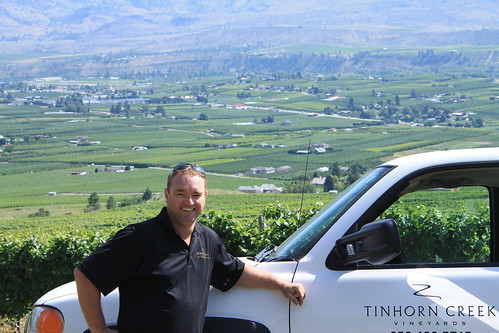
Further south, in the hotter region of Oliver, Tinhorn Creek viticulturist/ vineyard manager Andrew Moon, says the
Okanagan Valley offers the perfect climate for aromatic white wines.
Tinhorn, perhaps more famous for its Merlots and Cabernet Francs, also prides itself on its distinctive Gewurztraminer and Pinot Gris program.
“It’s an amazing place to grow grapes,” says Moon, who moved to British Columbia from Australia in 2009. It’s a dry climate with little or no devastating Downy mildew or other vineyard diseases that come with heat and humidity. It also has desirable heating and cooling, ranging from a high of 35C during the day to a low of 10C at night, during the summer that concentrates the sugars but doesn’t burn away the acids.
 Moon likes to pick his aromatic whites earlier than most wineries and chooses to harvest based on acidity (pH levels) rather than sugar levels, much like they do at JoieFarm.
Moon likes to pick his aromatic whites earlier than most wineries and chooses to harvest based on acidity (pH levels) rather than sugar levels, much like they do at JoieFarm.
“We don’t care about sugar levels in our Gewurz,” Moon says. “We don’t want that goopiness, we want uplift, low alcohol and freshness.”
Tinhorn’s Gewurz is particularly unique in that it maintains wonderful aromatics without being too flowery and musky and still has a fresh approach on the palate. The temptation with Gewurz is to let it hang in the vineyard to bring out the exaggerated aromatics of exotic spices, perfume and rose petals. But the price for that is often a flabby wine on the palate with little acid lift and nothing that leaves you wanting more.
For the Gris, Moon lets it hang in the vineyard “until the apple flavours disappear. We want tropical and melon flavours in our Gris, not apple.”
•••

In Ontario, where Chardonnay often gets top billing, Fielding Estate winemaker Richie Roberts has turned his portfolio into a white aromatic machine.
The Beamsville Bench winery in the Niagara region has become one of Ontario’s top producers of Pinot Gris, Riesling and Viognier in several tiers.
The main motivator for Roberts and proprietor Curtis Fielding was finding the right varieties to plant in their vineyards. That came by trial and error (and a lot of replanting) but they feel they have the right grapes in the right places, especially in the home vineyard that surrounds its lofty perch on the Beamsville Bench.
It took a mission to Alsace, France, for Roberts to realize he was heading in the right direction with his aromatic white-wine dominant portfolio.

Roberts has always had a lot of respect for the way the Alsatians go about their business creating aromatic white wines with substance and personality and setting them apart from the rest of the world with the varieties they choose to champion (primarily Gewurz, Riesling and Pinot Gris). A trip there earlier this year showed him “that we are doing a lot of things right” in Niagara.
While Roberts went to Alsace to learn more about Riesling, it was Pinot Gris, and a long four-hour tasting and heart-felt chat with Alsace stalwart Pierre Trimbach, which left a lasting impression.
Roberts makes what I consider the be the top Pinot Gris in Niagara, the single-vineyard Rock Pile, and it continues to evolve in the Alsace style with robust aromatics, wonderful texture, purity of fruit and built to improve over time.
Some of the tweaks Trimbach suggested were pushing the harvest further along for better extraction, and sulphur additions to help the wine age (or prevent oxidation) and develop in the bottle for longer periods of time to fully integrate the fruit and bring out those lovely tertiary aromas and flavours that can lift Pinot Gris to another plateau.
•••
Looking to up your aromatic game?
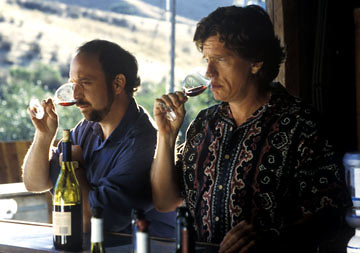 Maybe you can find inspiration from Miles Raymond, the lead character in the Hollywood movie Sideways (2004).
Maybe you can find inspiration from Miles Raymond, the lead character in the Hollywood movie Sideways (2004).
Miles: “Now, stick your nose in it. Don’t be shy, really get your nose in there. Mmm … a little citrus … maybe some strawberry …
[smacks lips]
Miles: … passion fruit…
[puts hand up to ear]
Miles: … and, oh, there’s just like the faintest soupçon of like asparagus and just a flutter of a, like a, nutty Edam cheese…
Jack: Wow. Strawberries, yeah! Strawberries. Not the cheese …
Couldn’t have said it better myself, Jack!
NOTE: This story was originally published in Quench Magazine and the TravelingGolfer.net





Comment here